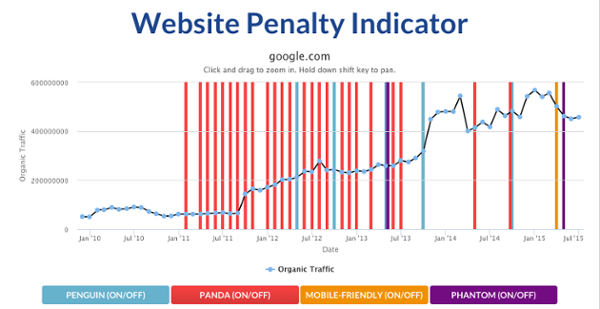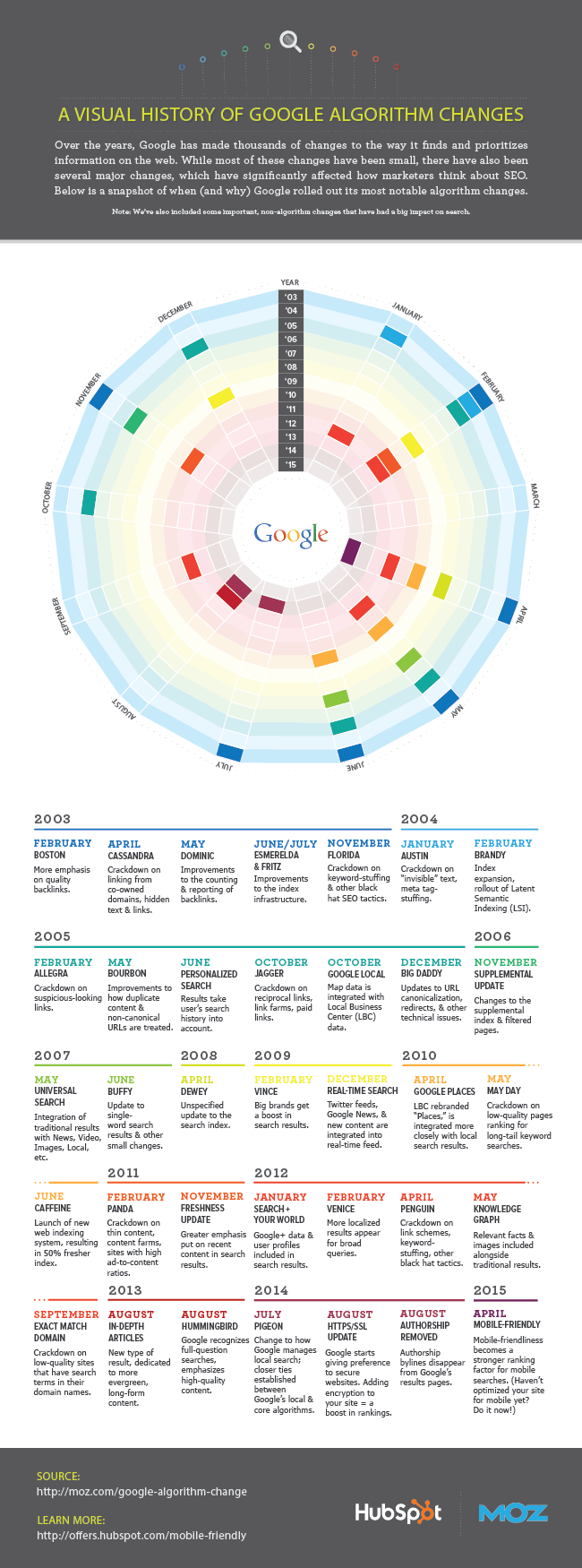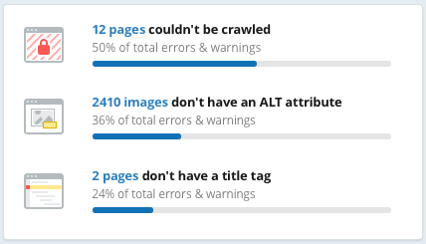Please include attribution to Blog.HubSpot.com with this graphic.
Penguin first launched in 2012 as a way to combat genuine spam rather than sites that are legitimate but poorly made. Penalties focused on keyword stuffing, cloaking, link building … basically, any method you’ve heard of referred to as “black hat.”
As of 2016, its fourth version punishes bad links instead of the entire site — helping rehabilitate web domains that might still have good intentions behind them.
Intrusive Interstitial Penalty (2017)
Google opened 2017 by doubling down on its commitment to mobile. This update punishes websites with interstitial ads and other pop-out content that can hinder a page’s functionality on a mobile device.
Not every ad-heavy website will suffer, but those that severely affect the user experience can be the next to lose their rank.
These updates are not one-offs. They are reinforced every year to keep up with copyright violations, unwanted content campaigns, and similar black-hat techniques — and to make sure their searchers are increasingly satisfied with their results.
Step 2: Audit Your Website for These Black Hat SEO Failures
I know you don’t have time to examine every manual action Google has ever performed. I also know if you’re reading this, you probably want your users to have a good user experience.
With that in mind, here’s a brief list of things that might cause low website traffic due to a manual action Google took to further enforce its search criteria. Any one of these could help you determine if you have a Google penalty against your website:
- The majority of your content contains pop-out ads.
- Your content is keyword-stuffed.
- You have short-form content, often unedited for quality and errors.
- You haven’t localized site content that caters to global visitors.
- You’ve engaged in bad link-building practices to increase page authority:
- “Cloaking” keywords across your page so users can’t see them.
- Buying excessive backlinks to your website.
- Your content has inherited backlinks from adult, gambling, or otherwise low-quality pages.
- Your website doesn’t have a legitimate security certificate (HTTPS).
- You’ve republished content from other websites without permission.
- Your website has a high load time or poor appearance on mobile devices.
Step 3: Find Out If You Have a Ranking Problem
First of all, diagnosing the issue is key. Without knowing what Google penalty you’ve been hit with, you can’t optimize against it. Back in October 2014, for example, most people thought they were dealing with a Penguin update, but it was in fact an extended Panda update.
Here are a few tips to help you properly diagnose the issue:
Use a penalty indicator tool to find out what’s happened to your website in the past, and if you have yet to recover from it.
A fast and simple tool to drop this knowledge bomb on you is this succinctly titled Website Penalty Indicator.

This Google penalty checker from FEInternational can show you which of the major Google penalties hit you and at what point they reached your website. (Of course, to be cheeky, I tried out “www.google.com” to see what would happen.)
However, you’ll notice that this tool focuses on the most significant algorithm changes, and not all of the little manual ones in between. To examine those updates, you’ll need to follow the next step.
Use tools like SEMrush to find out if you’ve been penalized by one of Google’s updates.
By using tools like SEMrush, you can perform a complete site audit and check how your position has changed in SERPs, check your backlinks, and analyze your content.
Step 4: Identify the Google Penalties to Optimize Against
This section was contributed by Elena Terenteva, Content Strategist at SEMrush.
The best thing you can do for your website is to avoid penalties in the first place. Website owners who break SEO rules risk manual penalties or being seriously harmed by algorithm updates. When a website is hit with a penalty, it’s more than likely due to one of the following reasons:
- A lack of knowledge on behalf of the SEO specialist
- A purposeful violation of basic SEO principles
- The use of various black-hat techniques
But if you have been hit by a penalty, how you’ll figure out the root cause will depend on what kind of penalty it is.
If a website gets a manual penalty, the owner will be notified through Google Webmaster Tools and receive a letter explaining the reasons for its failure. This means the website owner will at least have an idea of how to recover and can begin working on the suggested changes.
If your website is hit by an algorithm change, the situation becomes slightly more difficult. You need to find a correlation between Google’s last actions and your website’s losses.
Don’t forget that website position and traffic losses can be caused by general problems and may have nothing to do with algorithmic changes. If you do find that you were harmed by a specific algorithm change, get all the information you can about that update so you can start to resolve the issue.
Of course, all of us want to avoid being hit by a penalty in the first place. If you want to be prepared, I recommend consistently running SEO audits. Here are a few things you can do:
- Remove or disavow unnatural or spammy links manually.
- Be sure that your anchor text is diversified.
- Get rid of all duplicate content.
- Create non-keyword-stuffed, quality content.
- Keep an eye on UX.
You can also see some of these tips for avoiding a penalty visualized in this infographic.
Remember that the best strategy is to avoid penalties before Google even crawls your content. SEO isn’t just about trying something new. It’s about constantly monitoring the success of your historical efforts.
Although avoiding penalties may seem like building a house of cards that may collapse at any minute … well, that’s kinda the way it is! That’s why it’s important to ensure that your website is up-to-date, helpful, and trustworthy.





